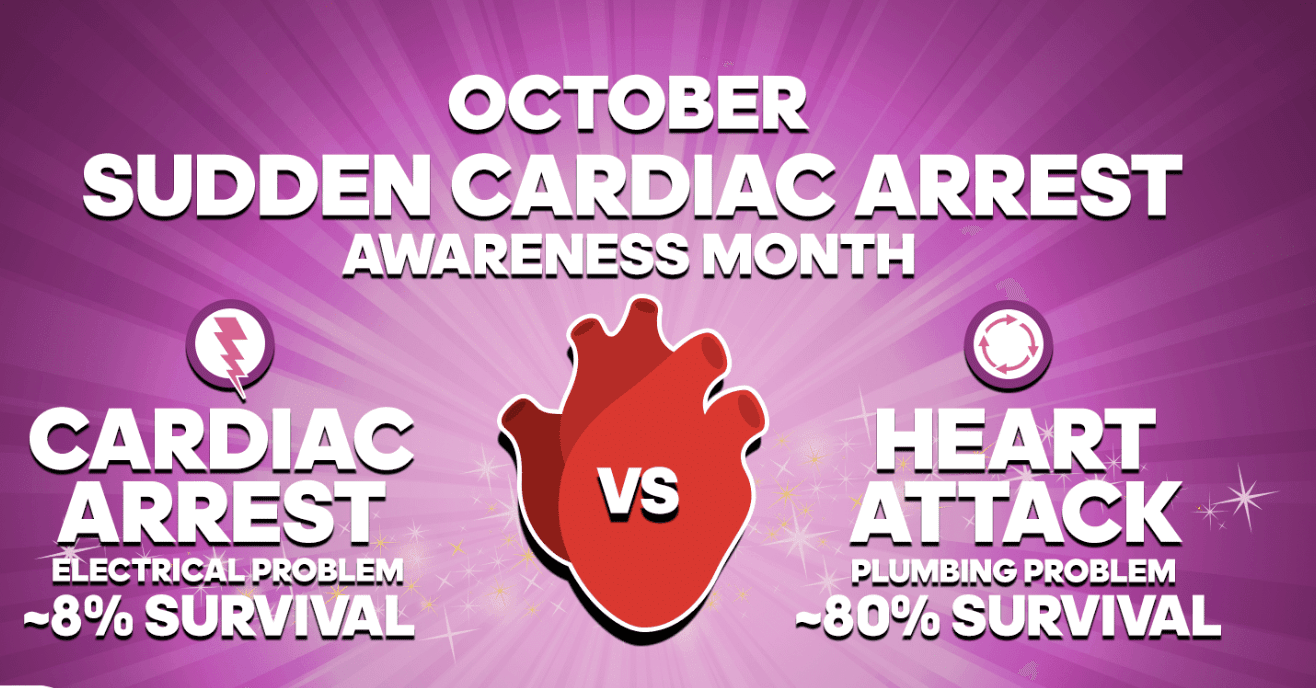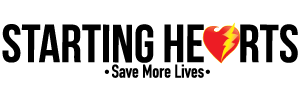
Every October, special attention and acknowledgement is focused on Sudden Cardiac Arrest (SCA). What are the risk factors, causes, symptoms, and steps for providing life-saving assistance? Sudden cardiac arrest is a leading cause of death and claims approximately 400,000 lives per year.
SCA occurs when the heart’s electrical impulses are disturbed, resulting an abnormal pattern and timing of heart rhythm. This leads to cessation of breathing and the victim loses consciousness – distinctly different from a heart attack (blockage of blood flow in coronary arteries leading to the heart). Heart attacks are most often seen at ages over 35, but SCA events happen at younger ages.
When a person collapses from SCA, it is imperative that immediate aid is given by first calling 911 for dispatch of emergency medical services, next through cardiopulmonary resuscitation (CPR) (the administration of chest compressions to restore breathing), followed by immediate use of an automated external defibrillator (AED) to restore normal heart rhythm by a series of electronic shocks to the heart. No experience is needed to use this life saving device – it dispenses voice commands and analyzes the abnormal heart rhythm to administer the correct shock needed to restore normal heart rhythm.
The phrase to remember when responding to SCA is CALL.PUSH.SHOCK.™ – referring to calling 911, administering hands only CPR to and then applying an AED to shock the heart into its normal rhythm.
Sudden Cardiac Arrest Awareness Month’s express purpose is to call attention to SCA – what it is, and how life saving aid can be administered to SCA victims until emergency medical assistance can arrive. The first several minutes after an SCA event greatly increases the chances of survival.
The message of Sudden Cardiac Arrest Month every October is to be aware of SCA, and know what to do about it – you’ll be doing your part to save a life!
